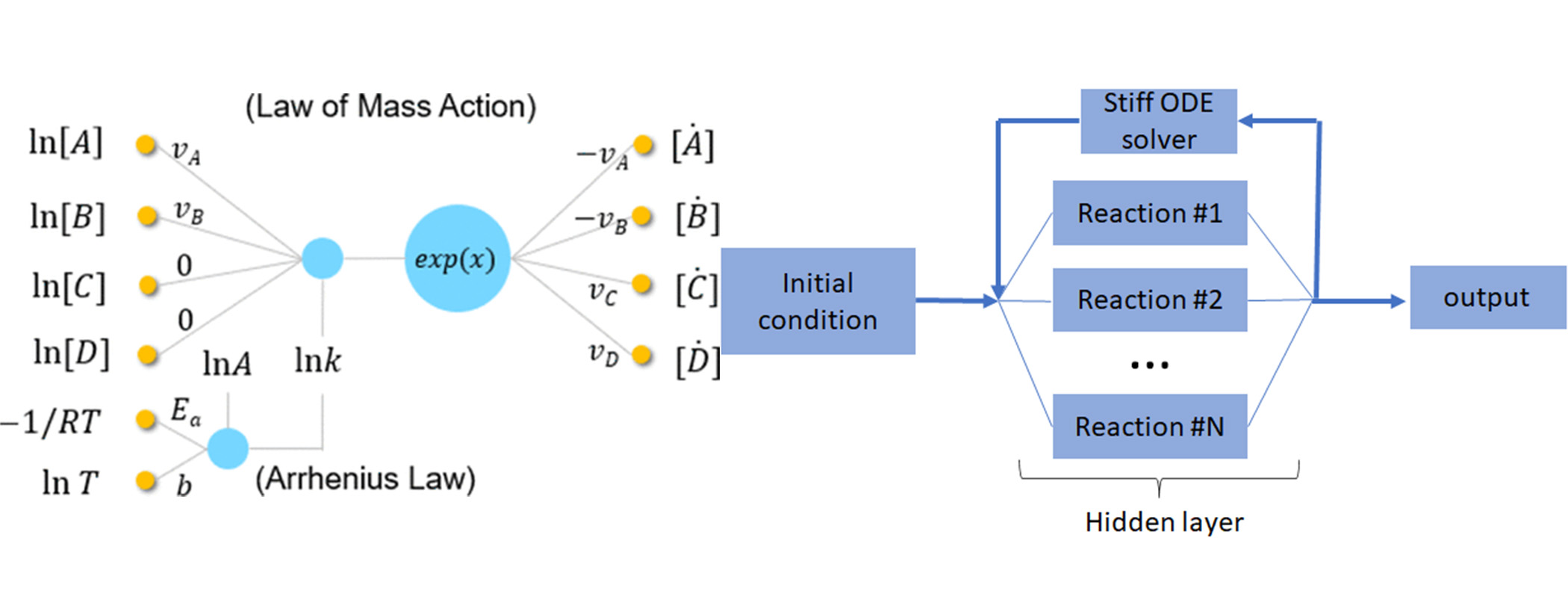Nitrogen oxides (NOx) are a major pollutant caused by combustion. To understand the NOx output of a combustion system, researchers can use computer simulations. Unfortunately, the size of chemical reaction mechanisms involved in combustion simulations have increased so much in recent years that these simulations have become extremely computationally costly.
Hongyuan Zhang, a 2020 UMII MnDRIVE PhD Graduate Assistant, worked on a project called “Optimization of Combustion Parameters for the Reduction of Soot/NOx Emission Based on Regularized Multi-task Neural Nets.” In this project, Mr. Zhang developed a machine-learning method to reduce the size of the chemistry kinetics based on the Chemical Reaction Neural Network (CRNN). The CRNN is build based on the Arrhenius law, so the new neural nets are interpretable. Hence, the CRNN can be used to explore the new reaction mechanisms. The final model is able to accurately predict NOx formation and includes only half of the number of chemical reaction equations.
Mr. Zhang is a member of the research group of Assistant Professor Suo Yang (Mechanical Engineering; MSI PI) and used MSI resources for this project. He has received two prestigious awards for his research:
- AIAA Martin Summerfield Graduate Award, the most prestigious award for any graduate student in the field of propellants and combustion. Only one student is selected for this award annually. An article appears on the mechanical engineering website: ME Graduate Student Wins AIAA Award.
- 2021-22 Frontera Computational Science Fellowship, which allowed him to work with the Texas Advanced Computing Center (TACC) at the University of Texas at Austin. He is profiled in articles on the mechanical engineering department’s website and the TACC website.
The UMII MnDRIVE Graduate Assistantship program supports UMN PhD candidates pursuing research at the intersection of informatics and any of the five MnDRIVE areas:
- Robotics, Sensors and Advanced Manufacturing
- Global Food Ventures
- Advancing Industry, Conserving Our Environment
- Discoveries and Treatments for Brain Conditions
- Cancer Clinical Trials
This project is part of the Advancing Industry, Conserving Our Environment MnDRIVE area.
Research Computing partners:
- University of Minnesota Informatics Institute
- Minnesota Supercomputing Institute
Image description: The structure of the neural net used in this study. Left: The structure of one reaction. Right: The structure of the whole neural net system.
